When it comes to combating ants, colony location is extremely important! Colonies of ants can live for very extended amounts of time and can grow to tremendous sizes where ant populations can be as high as half a million ants! Some ant species even have satellite colonies that aid in its survival. All ants undergo a complete metamorphosis which includes the egg, larval, pupae, and adult stages. Ants are extremely social insects that communicate with one another using chemical trails known as pheromones. Buckle up if you’ve seen a couple ants around the kitchen lately, more are likely on the way! Ants just cannot help but spread the word of good fortune once a good food or water source is found! There are over 12,000 species of ants worldwide and it can be daunting identifying the type of ant that is bothering you. A trained pest professional can identify an ant species and then select the correct method of treatment based on the characteristics of the particular species. Ant species vary extensively with their preference of food, shelter, mating, colony hierarchy, and environment.
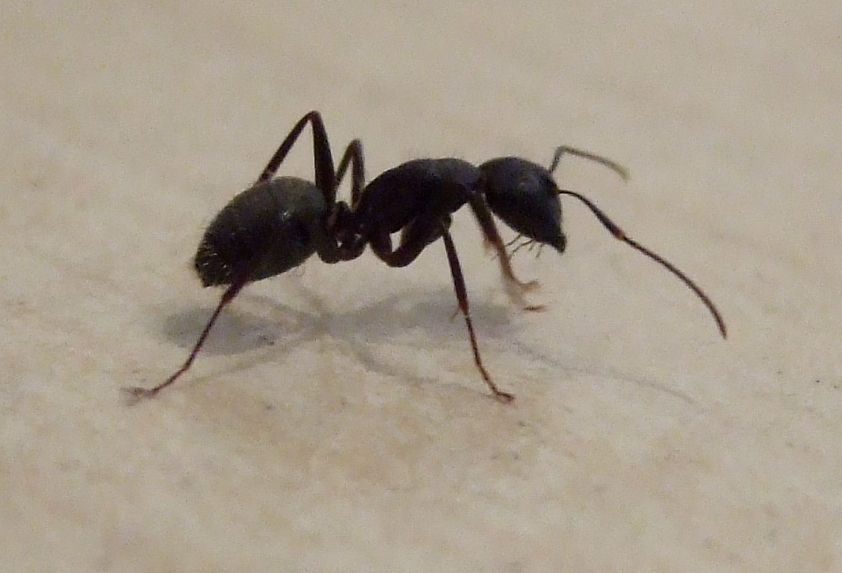
Carpenter ants can cause some serious structural damage to homes when conditions are right, and ants are left to flourish. Because carpenter ant colonies need constant moisture to survive, these ants are typically found outside nesting in damp dead wood but are often found venturing inside homes for food. A common misconception is that like termites, carpenter ants consume the wood they infest, when in fact, they only use it to dwell in. When damp conditions occur in the home from things like leaking pipes or poor ventilation carpenter ants can thrive! Treatment in such cases will require the moisture issue to be remedied. A trained pest technician can then locate colonies and satellite colonies and treat them with various types of insecticide applications which are determined by colony location and site specifics.
Carpenter Ants are some of the largest ant species found in the United States, with sizes ranging from about ¼ to ¾’s of an inch. The carpenter ant’s most prominent species is pitch black, however, other species vary with colors ranging from red, dark brown, light yellowish-brown, orange and multicolored red and black.
Fire ants can be very annoying and even painful when they sting! Depending on the person, an allergic reaction may occur after being stung, which can lead to life-threatening complications in some instances. Fire ant queens are typically noted to be around 5/8-inch in size and workers are approximately 1/8-inch to 1/4-inch size. Typically fire ants are reddish-brown or reddish-black in color and prefer to build soil mounds in lawns and around landscaping. Once a mound is big enough, it often dispenses new queens to start more colonies which can seem daunting to try to keep up with.
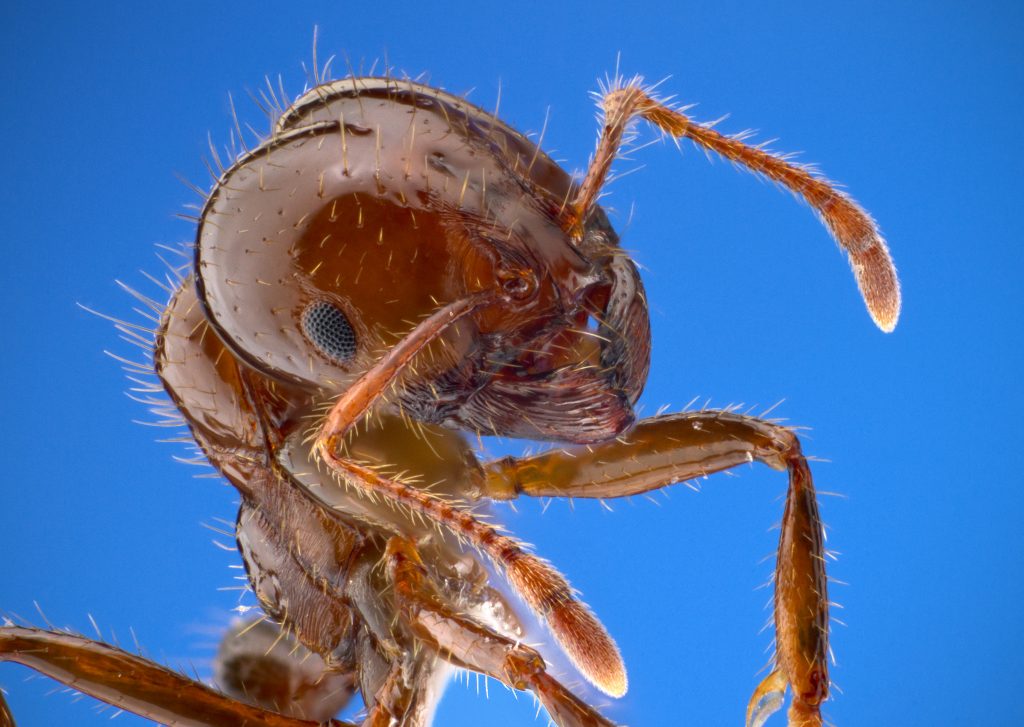
Control can be time-consuming as these ants build new colonies quickly and require regular bait treatments to keep them adequately controlled around homes or businesses, especially during the summer months. Although outdoors these ants prefer to eat other insects and dead animals, they also love to enter structures in search of sweets and greasy foods. Talk with a pest professional about setting up a fire ant treatment plan for your home or business if fire ants are a concern!
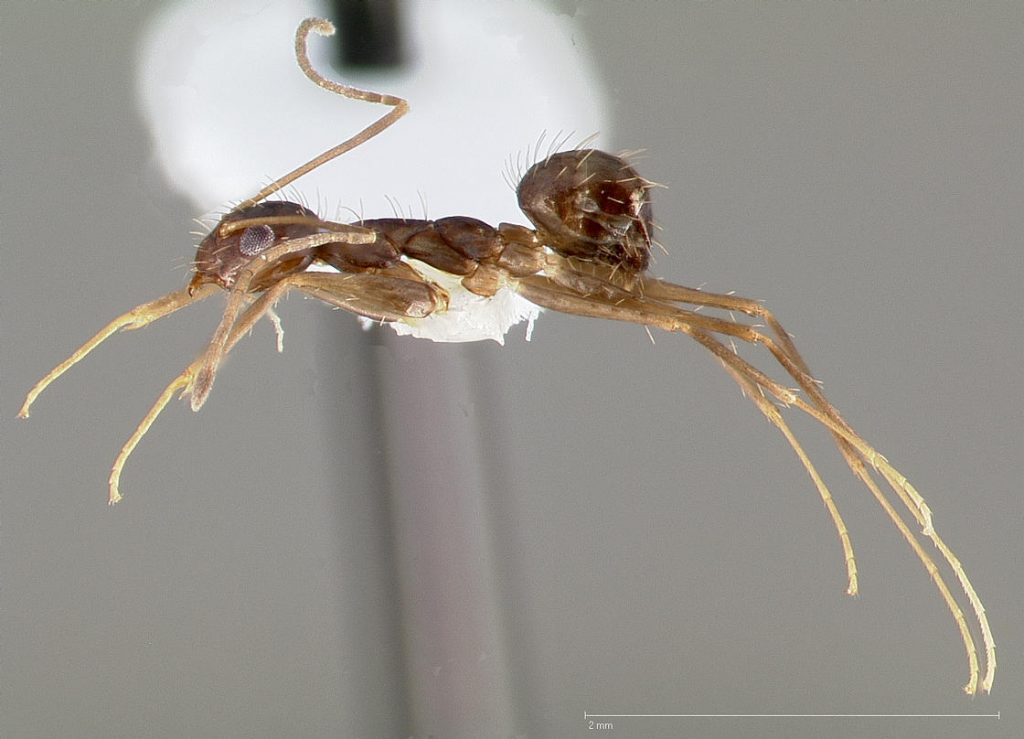
Crazy ants are found along the Gulf Coast of the United States, are about 1/8-inch in size and black in color. The legs and antenna of the crazy ant appear longer in proportion to its body when compared to many other ants. These ants are typically found nested outdoors under pine straw, mulch, in planters, beneath planted plants and more. When inside, crazy ants will make use of voids whenever possible. Always on the move, these ants show up quickly and spread from lot to lot rapidly requiring regular monitoring for effective control. If crazy ants are bothering your home or business, adding crazy ant control to your current pest plan is a great idea. These ants are quite finicky when it comes to being successfully controlled with bait, which as a result, often requires direct treatment of the colonies which can be difficult and tedious to an untrained professional.
Although the head and thorax of this ant are dark in color, this ant gets its name from its lightly colored abdomen and legs giving it a “ghost” like appearance. This ant is very small coming in at approximately 1/16th-inch in size on average. Still having trouble identifying this ant? Related to the odorous house ant, the ghost ant also gives off a pungent odor when crushed which some describe as smelling like rotting coconuts. These ants can enter facilities through the tiniest of cracks and will nest on both the inside and outside. Ghost ants love to consume a variety of sweets found throughout most kitchens. As these ants do not respond well to bait treatments, control can be difficult, a slow process, and require the direct treatment of multiple trails and colonies. If you’re struggling with ghost ants, consider setting up a residential pest service plan or adding ants to your commercial pest service.
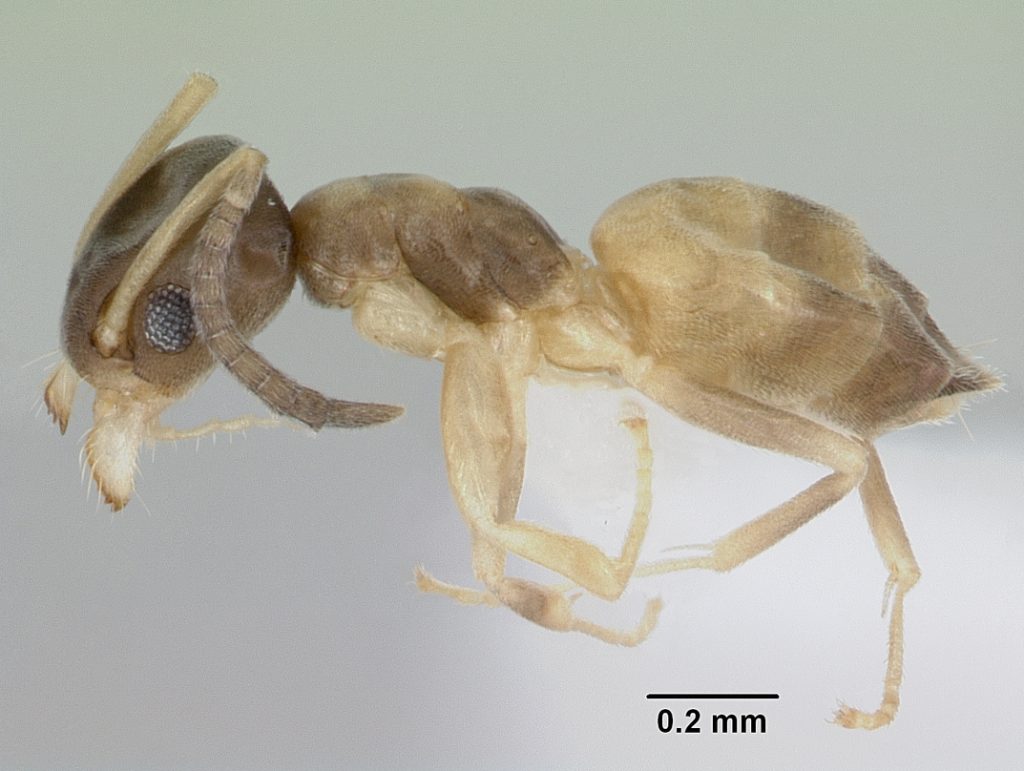
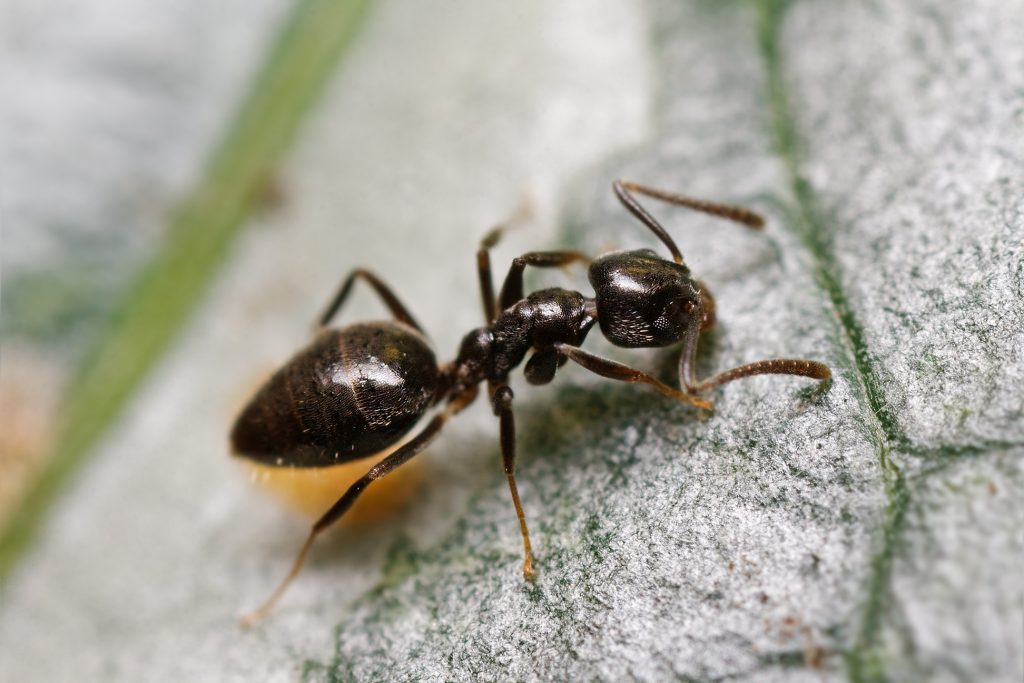
Odorous house ants, generally dark brown to black in color, are small ants coming in at approximately 1/16th-inch to 1/8th-inch in size and are related to the ghost ant. Like the ghost ant, odorous house ants also give off a pungent rotting coconut-like odor when crushed and are a fan of protein and sweets. Odorous house ants will also nest in wall voids, under carpets, under mulch, under landscaping stones, and are noted to not be easily managed with bait. Generally, colonies, for which there may be many satellites, must be treated directly. When baiting is required because nests are unable to be found or are out of reach, a trial of a variety of baits may be required until successful control is achieved. If you’re struggling with odorous house ants consider setting up a residential pest service plan or adding ants to your commercial pest service.
Pavement ants are about 1/8th-inch to 1/16th-inch in size, are generally blackish-brown in color and get their name from their preference to nest in yards under, directly beside, and in between expansion joints of pavements such as sidewalks, porches, curbs, streets, patios, foundations and more. These ants will feed on garbage, left out pet food, dead insects and sweets which is why they can be seen entering homes and businesses from time to time. This ant is often successfully treated with baits and or chemical residuals. If you’re struggling with pavement ants consider setting up a residential pest service plan or adding ants to your commercial pest service.
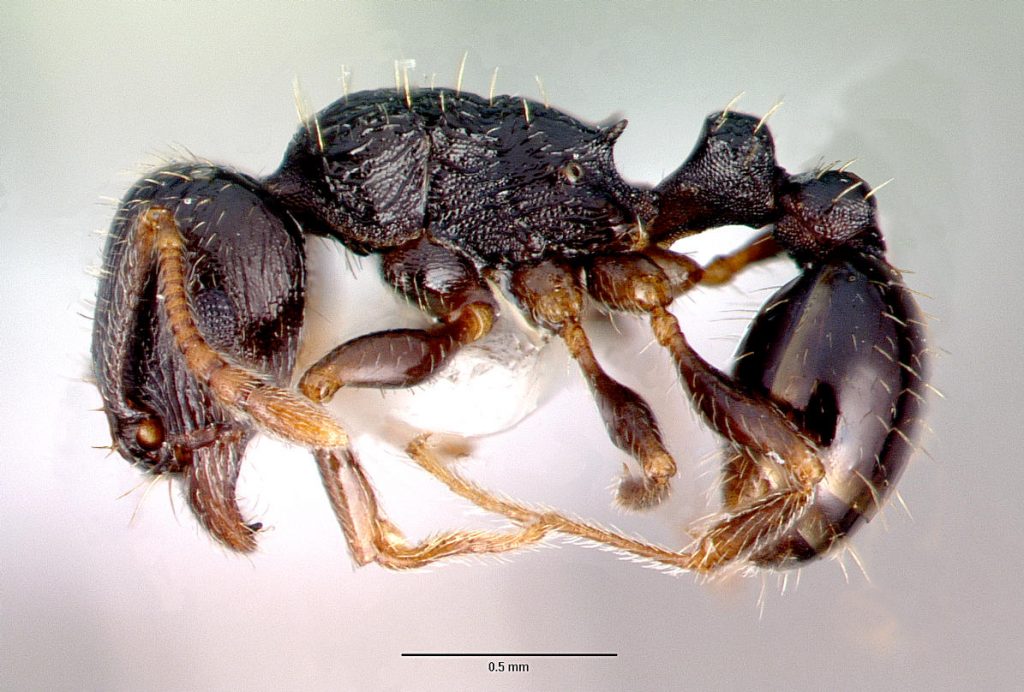
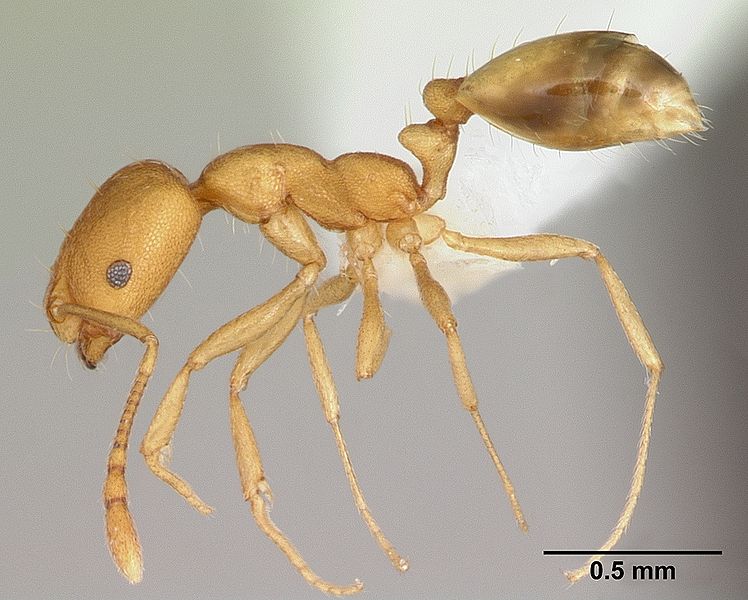
Pharaoh ants are very small ants coming in at approximately 2mm in size on average and are a light dull yellow color. Pharaoh ant control is difficult for multiple reasons. The pharaoh ant often uses pipe ways and conduit channels to travel, protected within a structure which can make trail detection difficult. This ant is often an ongoing battle for hospitals, as these structures generally provide the warmth, moisture, food and protected travel along deep vast passages found ideal by pharaoh ants! These ants can spread disease from room to room as they travel which is cause for concern. To make matters worse, these ants are extremely sensitive to many residual pesticide treatments and tend to bud when the wrong methods and products are used making the issue immensely worse. Often, nests are found a good distance from their food source which can make colony detection difficult. If pharaoh ants are bothering you, consider adding a pharaoh ant service to your current pest plan!
